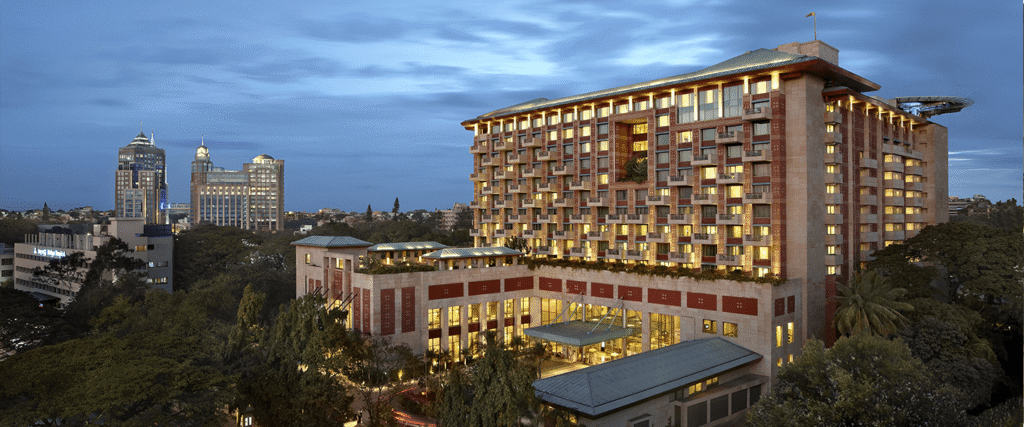For decades, “green building” has conjured images of vertical gardens, solar panels, and rating systems adorned with stars or plaques. While these gestures once symbolized progress, the climate crisis has outpaced them. The question for architects is no longer how to make buildings “less bad,” but how to make them actively good. Enter net-zero and …

Table of Contents
For decades, “green building” has conjured images of vertical gardens, solar panels, and rating systems adorned with stars or plaques. While these gestures once symbolized progress, the climate crisis has outpaced them. The question for architects is no longer how to make buildings “less bad,” but how to make them actively good. Enter net-zero and regenerative architecture: design philosophies that move beyond minimizing harm to creating positive environmental and social impact.
From an architect’s perspective, this shift is both daunting and liberating. It demands an expanded skill set energy modeling, ecological literacy, material science but also revives a deep architectural ethic: that buildings must serve not just their occupants, but their place.
From “Sustainable” to “Net-Zero” to “Regenerative”
Sustainable Architecture (First Wave):
The early sustainability movement focused on efficiency reducing energy use, conserving water, minimizing waste. While crucial, this approach often relied on add-ons: solar panels on energy-hungry buildings, or token green walls on glass towers.
Net-Zero Architecture (Second Wave):
Net-zero buildings balance what they consume with what they produce. A net-zero energy building, for example, generates as much renewable energy on-site as it uses annually. This requires not just efficient systems, but holistic design passive cooling, daylight optimization, renewable integration, and material choices.
Regenerative Architecture (Emerging Wave):
Regenerative design goes further: it seeks to restore ecosystems, clean air, recharge groundwater, sequester carbon, and strengthen communities. A regenerative building is not neutral; it is positive like a tree that provides shade, oxygen, and habitat beyond its own needs.
For architects, this evolution reframes design as not only problem-solving but also world-building.
Why This Shift Is Urgent
- The Climate Deadline. Buildings contribute nearly 40% of global carbon emissions. With India urbanizing at unprecedented speed, architects cannot afford incremental improvements.
- Energy Security. India faces rising energy demands, with cooling loads alone projected to triple by 2050. Net-zero strategies offer resilience against both blackouts and energy inflation.
- Water Stress. Regenerative design that harvests and recharges water is vital in drought-prone regions.
- Public Health. Pollution, heat stress, and poor indoor air quality make ecological design a matter of survival, not luxury.
- Cultural Continuity. Traditional Indian building practices stepwells, jaalis, shaded courtyards were inherently regenerative. Reviving them in contemporary language bridges heritage with innovation.
Principles of Net-Zero and Regenerative Architecture
- Passive First. Prioritize orientation, shading, thermal mass, ventilation, and daylight before adding technology.
- Energy Positive. Generate renewable energy (solar, wind, biogas) at or near the site.
- Water Positive. Harvest rain, recycle greywater, recharge aquifers.
- Material Conscious. Use low-carbon, recycled, and locally sourced materials; design for disassembly and reuse.
- Carbon Sequestration. Integrate biomass, bamboo, timber, and carbon-storing materials.
- Biodiversity Support. Create habitats through green roofs, wetlands, or site restoration.
- Community Benefit. Ensure buildings empower local economies, crafts, and social networks.
Architects Leading the Transition
B.V. Doshi (India)
Though his career predated today’s terminology, Doshi’s projects embodied regenerative thinking. Aranya Housing, Indore, designed for incremental growth, remains socially regenerative empowering residents to adapt and expand their homes sustainably. His institutional campuses, like IIM Bangalore, foster microclimates and shaded commons, reducing energy dependence while strengthening social life.
Charles Correa (India)
Correa pioneered climate-responsive design. The Jawahar Kala Kendra, Jaipur, integrates courtyards, water bodies, and shaded pathways demonstrating how passive design reduces resource dependence while enriching cultural experience.
Morphogenesis (India)
This practice (Manit and Sonali Rastogi) has consistently pursued net-zero goals. Their ITC Green Centre, Gurgaon, achieved one of India’s earliest LEED Platinum ratings, but more importantly, demonstrated energy efficiency and water positivity on a corporate scale.
Anupama Kundoo (India)
Kundoo’s work in Auroville and beyond explores material minimalism as regeneration. Her Full Fill Homes prototype uses modular ferrocement panels to create affordable, low-energy housing. Her projects emphasize not just low footprint, but also empowerment of local labor.
Vinu Daniel (Wallmakers, India)
Daniel pushes regenerative thinking with waste-as-resource. Using debris, soil, and scrap, his projects like the Chuzhi House prove that architecture can divert waste streams while creating beautiful, livable spaces.
Rahul Mehrotra (India)
Mehrotra’s advocacy of “ephemeral urbanism” aligns with regenerative thinking. His work at the Kumbh Mela demonstrates how temporary, light-touch interventions can leave minimal scars while serving massive populations an alternative to the permanence of carbon-heavy construction.
International Examples
- Ken Yeang (Malaysia): Pioneer of bioclimatic skyscrapers, integrating vegetation and passive systems.
- William McDonough (USA): Co-author of Cradle to Cradle, a foundational text on regenerative design.
- Bjarke Ingels Group (Denmark): Projects like CopenHill, a power plant with a ski slope and green roof, show how infrastructure can serve ecology and community.
Case Study 1: Pearl Academy, Jaipur (Morphogenesis)
Though often cited for its passive jaali façade, the Pearl Academy also exemplifies regenerative design. Courtyards cool the building, rainwater harvesting supports water cycles, and the double-skin reduces energy loads. It creates both comfort and cultural resonance, embodying the transition toward regenerative thinking.
Case Study 2: The Chuzhi House (Wallmakers)
Constructed from debris and waste materials, this house spirals into the landscape, blending with its site. By reusing what would otherwise pollute, it sequesters waste into architecture. Its form integrates earth cooling and shading, offering both ecological and aesthetic regeneration.
Case Study 3: CII-Sohrabji Godrej Green Business Centre, Hyderabad (Karan Grover)
One of India’s first LEED Platinum buildings, it combines passive strategies, water positivity, and renewable energy. More than a corporate office, it set precedent for mainstreaming net-zero goals in India.
From Rating Systems to Living Systems
Green rating systems like LEED, GRIHA, or IGBC have played an important role in normalizing sustainable design. Yet they often risk becoming box-ticking exercises. Net-zero and regenerative architecture demand a paradigm shift: instead of designing to satisfy points, architects must design to satisfy place.
This means embracing living systems thinking:
- A building is not an isolated object but part of a watershed, a microclimate, a social fabric.
- Success is measured not in certification but in net-positive outcomes cooler neighborhoods, recharged aquifers, restored habitats, empowered communities.
Challenges to Adoption
- Economic Pressures. Developers prioritize short-term ROI over lifecycle benefits.
- Policy Gaps. Regulations rarely reward regenerative approaches.
- Technical Literacy. Many professionals lack training in energy modeling, ecological systems, or life-cycle analysis.
- Cultural Misconceptions. Clients may conflate “green” with superficial gestures like vertical gardens, overlooking deeper systems.
For architects, advocacy is as important as design educating clients, policymakers, and communities.
The Future of Regenerative Practice
Looking ahead, regenerative design in India will likely focus on:
- Net-zero housing clusters that are energy and water positive.
- Retrofitting existing stock with passive and renewable upgrades.
- Circular construction using materials that can be disassembled and reused.
- Carbon-sequestering materials like bamboo, hempcrete, or mycelium.
- Hybrid infrastructures buildings that double as water treatment plants, energy generators, or community farms.
For architects, this is not just technical evolution but cultural renaissance: returning to the ancient Indian ethic of harmony with nature, now expressed through contemporary tools.
Conclusion
The era of ornamental sustainability is over. Beyond green walls lies a deeper horizon: architecture that is net-zero, regenerative, and life-affirming. From Doshi’s adaptable housing to Morphogenesis’ corporate campuses, from Anupama Kundoo’s material experiments to Vinu Daniel’s waste alchemy, architects in India and beyond are demonstrating that buildings can be more than shelters they can be engines of ecological and social repair.
The challenge for architects is immense, but so is the opportunity. To design a building that gives back more than it takes is to restore architecture’s noblest ambition: to serve life itself.






